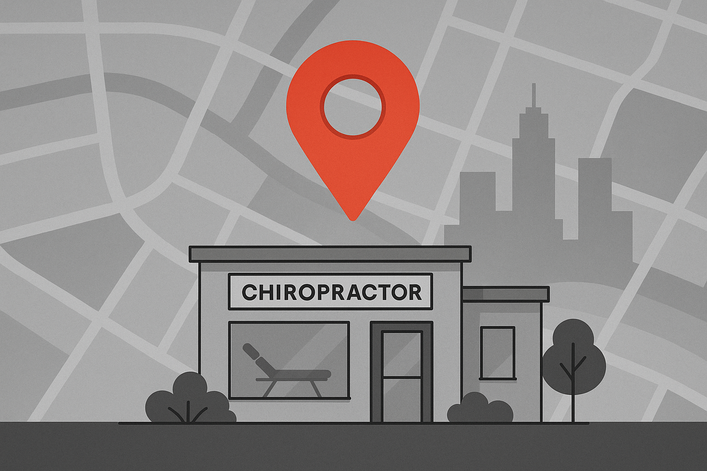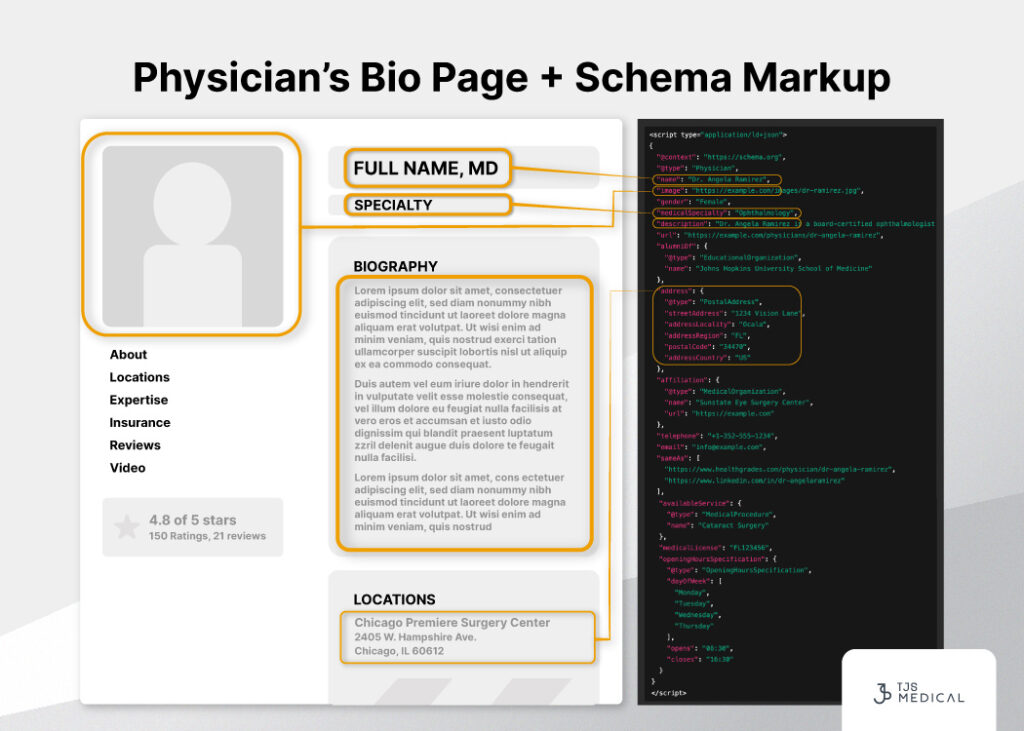
A step‑by‑step approach to winning local search, earning AI visibility, and compounding results so you can rely less on ads and referrals.
Everyone repeats the same tactics: post on social, ask for reviews, run ads.
Those can help, but they are not a growth strategy. The practices that create steady demand build an organic visibility flywheel that compounds over time. The goal is to be the most visible and trusted local option so you can depend less on paid channels and even traditional referral partners.
If you are not treating your Google Business Profile as the storefront of your practice, you are behind. For local patient acquisition, GBP often outperforms your social channels and competes with your website for first impression. Patients searching “chiropractor near me” in Austin, Tampa, or Chicago will often call straight from your profile.
Random posts do not build authority. Topic clusters tell search engines that you own a subject locally and deserve to rank for a wide set of queries.
Clusters signal topical depth and help you rank for dozens of long‑tail searches. Patients see a clear pathway from question to booking, which improves conversion.
Google’s Search Generative Experience and other AI search tools now provide instant, AI-written answers. The sources they cite tend to be concise, structured, and trustworthy — but structured data alone isn’t enough to get you there.
Search engines, including AI-powered ones, look for proof that your practice is a credible, recognized authority in your field. That means your name needs to show up in more places than just your own website:
AI results increasingly favor sources with strong, positive sentiment across the web. That’s why reputation management is critical. TJS Medical’s three-part approach to search engine marketing includes review growth and monitoring as a core component.
We help you:
Bottom line: The practices AI search engines choose to cite are the ones that combine structured, answer-first content with a strong, verifiable presence across the web.
Bonus Tip:

Adding proper schema markup to physician bio pages — such as Person, Physician, and MedicalOrganization schema — helps search engines understand credentials, specialties, and affiliations. This structured data improves your site’s authority and trust by making it easier for Google (and AI search) to verify the expertise behind your content and cite your pages as credible sources.
SEO alone is not a magic bullet. A durable plan blends organic visibility with selective paid support. Paid ads cover demand in the short term while your authority grows.
| Month Range | Primary Focus | Paid Ads Role |
|---|---|---|
| 1 to 3 | GBP overhaul, first content cluster | Fill gaps for high intent keywords |
| 4 to 6 | Second content cluster, steady review growth | Maintain for competitive terms |
| 7 to 12 | Expand clusters, optimize for AI summaries | Reduce budget as organic lifts |
A chiropractor in Tampa or Chicago might run search ads for “sciatica treatment near me” while building a sciatica cluster. As rankings rise, ad spend tapers and the pipeline stays steady.
Your target market is not everyone. Segment by need so content and offers match intent.
When you know who you’re trying to reach, you can focus your GBP, content clusters, and AI-ready answers on the highest-value searches in your area. This prevents wasted effort and positions you as the go-to chiropractor for those patients.
It’s one thing to understand your target market. It’s another to see what that market could mean for your bottom line.
Use the calculator below to estimate the size of your local opportunity. Just adjust the sliders for your city size, competition, and marketing efforts.
In less than a minute, you’ll have a snapshot of how many patients you could attract each month if your visibility was firing on all cylinders.
Strategy is great, but numbers make it real. Use our free Chiropractic SEO Opportunity Calculator to see exactly how much search demand exists in your city and what it could mean for your practice. Run the numbers and learn what to do with them here.
Once you know your potential, the next step is building the system that gets you there. That’s where the flywheel comes in.
If you’ve just run the numbers, you now have a rough idea of how many new patients your market could support each month.
That number isn’t a guarantee, it’s a target. The practices that reach it (and keep growing) do so by building a compounding system we call the patient growth flywheel. Each part of the flywheel strengthens the others, so momentum builds over time and results last longer than any single ad campaign.
Here’s how it works:
Can you see how the cycle continues on it's own, like a flywheel?
Competition and costs vary by market. Use smart targeting and clusters to win locally.
| City | Avg CPC (Google Ads) | Local Competition | Organic Opportunity |
|---|---|---|---|
| Austin | $6.50 | High | Strong with condition clusters |
| Tampa | $5.80 | Medium | GBP strength plus reviews wins |
| Chicago | $7.20 | High | Gain ground via niche condition focus |
| Springfield, Missouri | $4.50 | Low | Easier path to organic dominance |
You can survive on bursts of ads and referrals. You thrive when you are the most visible and trusted answer in your market. Build the flywheel with GBP, topic clusters, and AI‑ready content. Use paid search as scaffolding while authority grows. Over time, your organic visibility carries more of the load and your spend becomes optional, not mandatory.
Use ads for immediate demand, but funnel that traffic into a content cluster and your Google Business Profile. This balances today’s calls with tomorrow’s rankings.
Keyword research will verify local search volume for your metroplex or large city. However you won't go wrong targeting office workers with posture pain, athletes, seniors focused on mobility, and accident injury patients. Each requires its own content cluster and messaging.
Google Ads on high intent keywords paired with tightly matched landing pages, location, and call tracking is the fastest way to get new patients. Although it's the most expensive method.
Yes. Referrals are unpredictable and can drop off. Search authority gives you a direct and defensible pipeline.
It varies by market. For SEO, publish clear educational pages, earn high quality reviews, and build local and topical authority by linking back and forth between GPs and other local organizations. These are the bigger ranking levers.